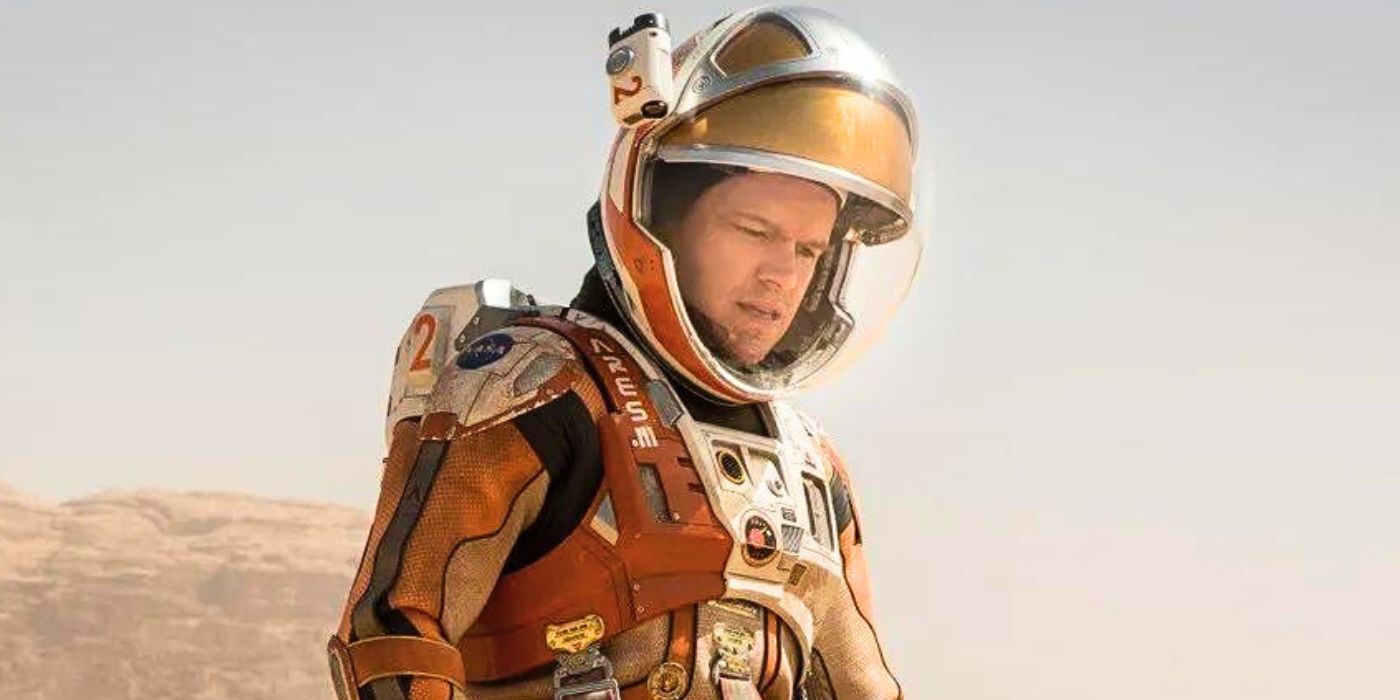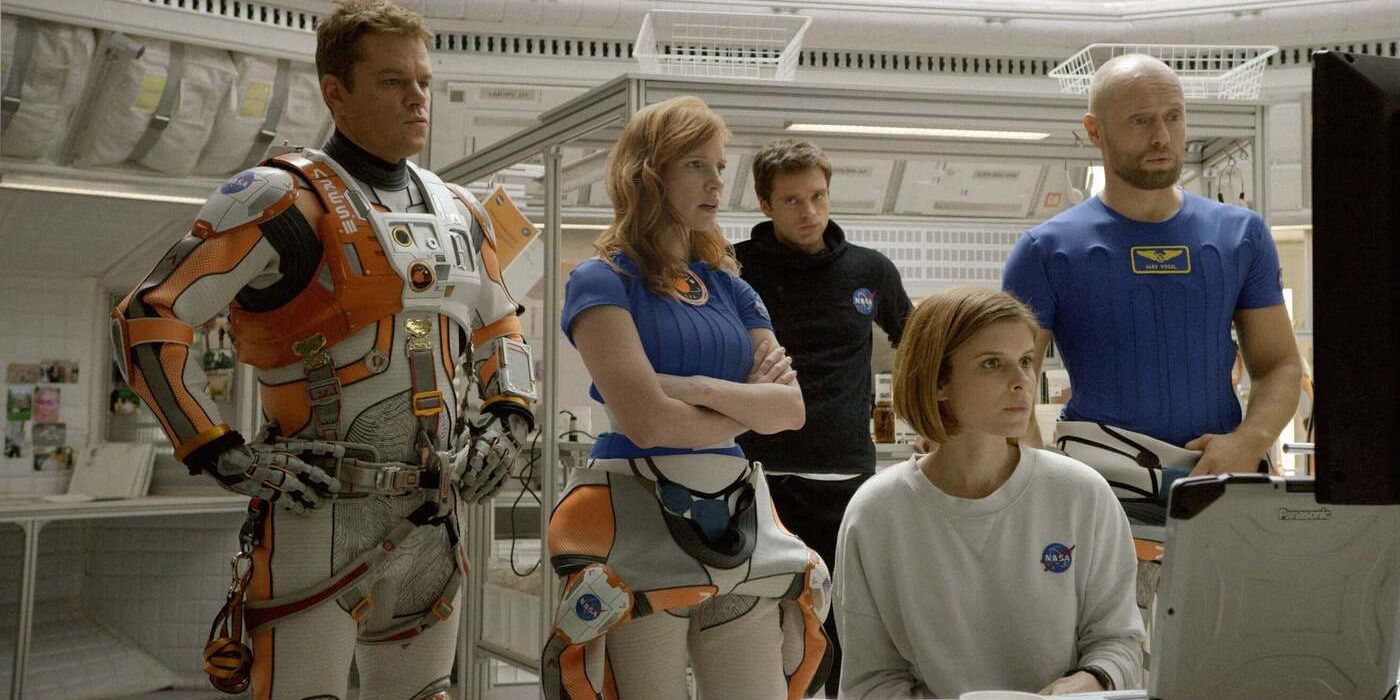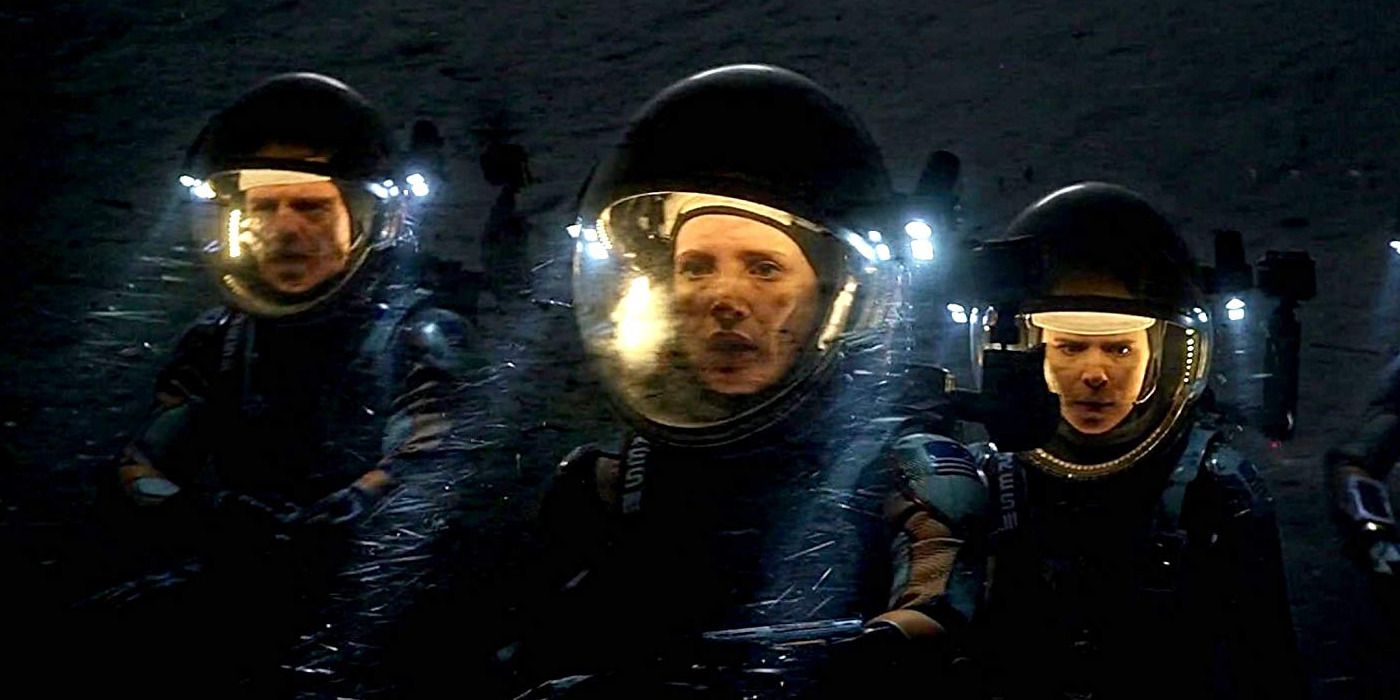While Ridley Scott has made many historical epics and stories rooted strongly in a sense of reality, you may be surprised to know that one of his most beloved science-fiction films is based more on science-fact than expected. After Andy Weir‘s popular novel, The Martian, was optioned for a film adaptation, Drew Goddard wrote a screenplay which Scott went on to direct in 2015. The Martian follows Matt Damon as astronaut and botanist Mark Watney, stranded on Mars and trying to survive while people on Earth attempt to communicate and organize a rescue mission. The film was a major critical and commercial success, garnering multiple Academy Awards nominations, including Best Picture.
The Martian is an entertaining, thrilling movie with a wholesome message about a large group of people coming together to solve a problem and ultimately save a man’s life through goodwill, collaboration, and scientific application. Weir, the author of the source novel, sought help from experts online to craft a story rooted in real science, and the film maintained this principle. The film production involved many NASA scientists working as consultants, aiding with the application of various space-related technologies in order to add a sense of realism. While not every element of the film was completely accurate, The Martian stands above most science-fiction films for promoting a strong cultural appreciation and admiration of science while also depicting a lot of realistic science on screen.
How Realistic Is ‘The Martian?’
What works well about science in The Martian is that it is set far enough into the future that things feel innovative and exciting, while close enough to the present that there is a strong sense of familiarity. Some of what is depicted may feel out of the realm of possibility, but the NASA scientists who aided in the making of the film, or engaged in a critical viewing of it afterward, felt enthusiastic about the movie’s approach.
The botany expertise Damon’s character brings to the ARES crew leaves him in a unique position of being able to make food for himself while he is alone on Mars. He goes about this by making water from the raw elements contained in equipment at their base. This, and the growth of the crops themselves, may seem outlandish, but they are entirely possible in our present day. In fact, experiments which took place around the time this film was released found that potatoes can grow in conditions similar to those on Mars.
An exciting development about some of the science in The Martian is that our understanding of Mars’ viability for crop growth has expanded to make Mark Watney’s survival even more likely. While Mark’s methods of making water for his Martian crops are based in simple chemistry, it is now understood that Martian soil has far more water than was known in 2015. This means the dangerous, difficult procedure of making water would not be necessary, making it even easier and more viable for someone to grow food under the right circumstances. Water can instead be boiled and collected right out of the ground itself.
Another element of the film that rooted the story in reality is the way that the NASA and engineering field cultures were depicted on screen. The behind-the-scenes discussions of how NASA’s PR should address the situation, and the corporate gridlock that results as they work out the most ethical, positive way to deliver this news to the public is an element that most movies about a thrilling journey to Mars gone awry would neglect to give any attention. Scott, and the incredible ensemble cast on the ground including Jeff Daniels, Sean Bean, Chiwetel Ejiofor, Kristen Wiig, and Benedict Wong make the scenes on Earth as riveting and entertaining as the high-stakes situation back on Mars.
The rescue that occurs toward the end of the film seems improbable, but Dr. Robert Zubrin wrote in The Guardian that the windowless craft used to propel Mark within reach of his crew could work in the right conditions. Precision, and perhaps a bit of luck, would be required for it to go off seamlessly, but it is fascinating to consider such a cinematic, over-the-top finale to this film actually being within the realm of possibility.
Several Elements of ‘The Martian’ Still Leaned Into Fiction
Despite the approval of actual NASA scientists for many of the film’s spectacular moments, there are still a couple of key issues that The Martian gets wrong. The question becomes how far off the movie can stray from believability before the intent of the story is lost, and in science fiction there is definitely a greater suspension of disbelief. The few elements of The Martian that are not strictly based in reality are necessary, primarily for building narrative tension. While some scientifically minded viewers may roll their eyes, like Neil deGrasse Tyson tweeting about Armageddon, The Martian is well-intended and self-aware enough that it can be given a pass for the few times science isn’t airtight.
The biggest inaccuracy in this film is the inciting incident that leaves Mark Watney adrift on Mars to begin with. The perilous dust storm that blocks their vision and keeps the team from being able to recover Watney after he is hit and impaled by a piece of equipment makes for a great opening set-piece, but in reality this would not happen. NASA released an article addressing the film, explaining that Mars’ atmosphere is incredibly thin compared to Earth’s, meaning that wind speeds need to be much higher to achieve an effect strong enough to rip a satellite dish off of a building. Considering this, and the fact that the larger dust storms recorded on Mars tend to top out at 60 miles per hour, a dust storm like the one encountered in The Martian is far too extreme. While it is unfortunate that the major inaccuracy of the film is one that the rest of the story needs to play out, it does not ruin an otherwise entertaining and fairly well-researched movie. Weir noted this inaccuracy from the time the book was published, and it is clear that he and Scott are alright with sacrificing a bit of accuracy for the sake of telling a thrilling story.
One point that some have called out is that the film does not address the long-term implications of the different exposures to solar radiation in space or on the surface of Mars. Weir has noted, as some critics contend, that Mark would most likely be in some serious trouble after experiencing hundreds of days of radiation. While some felt it would most likely lead to a severe battle with cancer, astronaut radiation expert Ron Turner found in his research on the subject that Watney may have been largely shielded from these risks. Turner attributed this to the wide spectrum of impacts radiation exposure can have on individuals, and cycles of the sun that cause radiation to increase or decrease at certain times. Weir does not acknowledge concerns about radiation exposure in his book, and the film does not either. However, this is a complicated issue which, for the sake of the story being told, is sensible to neglect in order to streamline the narrative.
Ridley Scott Reminds Us Why Science Is Important in ‘The Martian’
The Martian is sci-fi, and even considering how realistic some elements of the film are, the story probably would not play out exactly in real life as it did on film. However, the biggest takeaway from this movie is that science is how we bring people together in order to solve problems. Whether those problems are big or small, life-or-death, trusting in science allows people to work out the steps necessary to address them in the most efficient way possible.
When Mark Watney begins lecturing a group of prospective astronauts about the realities of working in outer space, he explains that ultimately it all comes down to being able to solve problems. Ingenuity, resourcefulness, and the ability to adapt to rapidly changing circumstances will save you a lot of trouble, even if you are not stranded on another planet, and all of those traits come naturally to an individual or culture that embraces and applies science to their benefit. The film ultimately is extremely successful in depicting an idyllic reality where nations can collaborate for the sake of scientific progress. While our current world may not be this way, it is not an impossibility if the mutual benefits are made clear to those who have the power to make things like space travel possible.
Not all the events depicted in The Martian are entirely accurate, but broadly speaking, this is a movie that went out of its way to craft a relatively realistic version of a completely speculative, fictional story, and to great effect. It is a rung above most science fiction films simply for taking the effort to listen to the experts. While Ridley Scott has no problem boldly, hilariously shrugging off critics who point out inaccuracies in his work, The Martian turned out to be a fairly easy watch for astronauts who may want to nitpick the film, and an impressive addition to his iconic filmography.
‘The Martian’ Is One of Ridley Scott’s Best Crowd Pleasers
Scott has a unique career, as a particularly visionary director who has spanned many decades with culturally impactful, critically beloved, and commercially successful movies. Alien and Blade Runner are early examples of Scott’s ability to craft a masterful science-fiction movie. Not only are his narratives rich and compelling, but the look and feel of his sci-fi worlds are fully fleshed out and incredibly immersive. But these movies also point to an underlying darkness that runs throughout many of Scott’s greatest works.
The Martian is in contrast to these movies as it embraces and underlines a resonant hope in humankind. The movie begins with a relentlessly harrowing tragedy, but it centers on a unifying, worldwide effort to save one person, and the fact that the mission is ultimately successful proves Scott is working in a lighter, more optimistic zone than usual. The Martian is one of Scott’s least challenging films on a thematic and stylistic level, but that also makes it one that is universally easy to enjoy. It’s a great example of a director with a titanic level of impact on the medium shifting into a populist mode and making a crowd-pleasing blockbuster that is markedly better than your average big-genre movie. It may not be Scott’s greatest film, it is an impossibly high bar to clear when you have so many classics under your belt, but The Martian is one of his best in recent years, and steered him back on course after the critical struggles of his Exodus: Gods and Kings, and served as a palette cleanser after The Counselor, which is one of his darkest movies.
Ridley Scott Made ‘The Martian’ in Sharp Contrast to His Last Sci-Fi Movie
Something to note about The Martian is how much it stands in contrast to Scott’s previous science-fiction movie, Prometheus. In Prometheus, we follow a group of scientists who are arrogantly diving into a space-faring adventure that is far beyond their capabilities. They make a series of bad decisions, and most of them die horribly in the process. Prometheus maintains a pointedly cynical view of humanity, especially as it relates to our faith in our ability to understand things beyond our reach. It is a movie about a futile, fatal attempt to find answers to the largest questions offered by the universe, and the hubris of humankind for thinking they have a chance of finding those answers.
In comparison, The Martian, which was released three years later, is overwhelmingly a celebration of humanity. While Prometheus questions humankind’s limitations of ego and intellect, The Martian is about people putting egos aside and using their intellect to do something incredible. Ingenuity and empathy are the driving forces underlining every major character’s path in The Martian. Scott embraces the concept of space travel, and The Martian emphasizes the grand, scientific achievements that come with it wholeheartedly. The film is thrilling, but in the end, Mark Watney’s stay on Mars is not relayed as a cautionary tale about man exceeding his grasp. Instead, Mark turns it into a lecture on the power of human resilience, and the importance of taking a science-based approach to problem-solving.
The Martian is one of the most uplifting movies in Scott’s entire filmography, trading out an oft bleak worldview with one that is brimming with awe and wonder, depicting a world coming together to do right by one person.
Where Did ‘The Martian’ Find Its Mars?
Like a great deal of movies that have been set on Mars, The Martian did most of its Martian photography in Jordan. More specifically, The Martian – and films such as Red Planet – filmed in Jordan’s Wadi Rum desert. This region has served as an iconic location in movie history, as desert scenes from Lawrence of Arabia were filmed there. The distinctive look of Wadi Rum makes it a great, cinematic location, one that has also been used to film some of the latest Star Wars sequels, and both of Denis Villenueve’s Dune films. The Martian relied on Wadi Rum’s unique, red landscape to serve as a stand-in for Mars. The production crew filmed exterior scenes with practical spacesuits, and a real “Mars rover” that was constructed specifically for the film. The rover was gifted to the country of Jordan after filming, and now sits on display in Jordan’s Royal Automobile Museum.
The Martian is currently available to stream on Max in the U.S.
WATCH ON MAX








